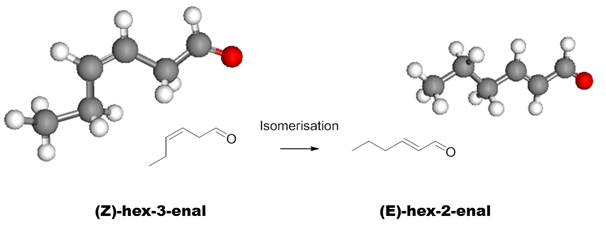ZOMG!!! Chemicals!!!

Craig McInnes talks about the public’s recent exposure to (Z)-hex-3-enal and its wider ramifications.
Very recently I was reminded of a very specific chemical, a chemical that goes by the scary-name of (Z)-hex-3-enal, a chemical that, believe it or not, most of us have probably been exposed to, a chemical so reactive that it can only be described as unstable, a simple molecule, but one that may well trigger memories from your childhood and could be described as mood-altering. In fact, there’s a high probability that in the last week or two you’ve inhaled this chemical. It’s also a chemical synonymous with the word grass. Quick! Lock up your children, break out the gas masks, ZOMG!!! Chemicals!!!
Or you could do none of those things and look up the hashtag #Chemophobia, realise that I’m pulling your leg and that you’ve been had. “But wait, mood-altering, unstable, other scary words you used” you might protest. That’s cool, don’t worry, I was purposefully misleading you. (Z)-Hex-3-enal, or leaf aldehyde as it’s also known, is nothing more than the chemical you smell when someone has just cut the grass. “But mood-altering?” Yup, who doesn’t smile when they smell that familiar scent? And to pre-empt your other questions, dear imaginary-reader that I’m having this conversation with, who doesn’t remember smelling that smell in the park one childhood summer? (thus – memory triggering.) Even the word unstable, which could easily have been taken out of context, is making reference to the fact that this chemical degrades (isomerises to be more precise) into a slightly different chemical (E)-hex-2-enal, which doesn’t smell of freshly-cut grass; neither compound will do you harm 1.
So was this whole reading experience a waste of time? Well, I hope not. Try to remember that the word chemical isn’t necessarily as scary as it initially sounds and the next time that someone uses the blanket phrase “nasty chemicals” ask yourself, “is this particular chemical nasty, or is this all being taken out of context?” If you do that, hopefully you can then do some reading of your own to negate scare-mongering. You might even be able to add back some of that much needed context. If in doubt, jump onto twitter (or leave a comment below) and ask a chemist. Turns out they’re everywhere and they like to talk.










